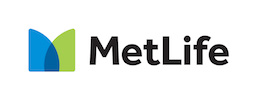Beyond the Basics in a Financial Inclusion Project
Part 2 of The Ebb and Flow of Customer-Centricity in Financial Inclusion

Center for Financial Inclusion Blog
Posted by Evelyn Stark, Assistant Vice President, Financial Inclusion Lead, MetLife Foundation, and Graham A. N. Wright, Group Managing Director, MicroSave
Financial Inclusion 2020 (FI2020) is a global multi-stakeholder movement to achieve full financial inclusion, using the year 2020 as a focal point for action. This blog series will spotlight financial inclusion efforts around the globe and share insights from key thought leaders in financial inclusion, with a specific focus on quality beyond access.
_____________________________
In the first part of this blog series, we saw how understanding customer demand is not enough to deliver mass financial inclusion … or even a successful product. Supply side factors are key … if rather more difficult than a quick market research exercise. Even after careful pilot-testing and a structured roll-out, all that preparation and keen balancing of client desires and institutional capacity to deliver sustainably didn’t necessarily work! Where were the clients? Why weren’t they storming the doors and asking for these wonderfully designed products? Weren’t our loan officers as excited as the project team? Did the CEO’s endorsement and great speech at the annual meeting make loan officers ready to sell the new products? Weren’t clients telling each other, and their cousins and friends?
No, they weren’t.
The supply side (staff) had not conveyed to the demand side (clients) that they had new products based on their feedback; they hadn’t convinced and trained staff, who were concerned that their jobs were about to get harder. Clients weren’t buying, and staff weren’t selling these new products. Once again, the action research partners* attacked the issues and MicroSave worked alongside, frantically learning and documenting.
- Product Marketing: We quickly discovered that any idea of “offer it and they will come” was optimistic. Product marketing and communication are essential in making the product and its functionality known.
- Staff Incentives: Many financial services providers did not offer staff incentives – or, rather, offered all staff the same incentives; or offered staff the “wrong” incentives. Paying incentives for no arrears led to some pretty poor customer service. Not paying incentives for savings, or for new products saw “orphan” products and a lack of attention to the customers’ full financial needs.
- Human Resource Management
- : To implement an effective staff incentive system of course required a systematic and robust human resource management system within which to operate. And as our partners grew, this need was further exacerbated particularly when trying to deliver high quality customer experience.
- Risk Management: New products bring change and new risks at the operational and strategic level – all a bit scary, particularly for organizations that have largely copied a tried and tested model as market-followers! New products bring not just process risks, but also regulatory and reputational risks, not to mention the obvious interest rate and credit risks. An approach to assessing and managing the risks involved in developing and introducing new products was also developed.
- Customer Service: By this stage, MicroSave’s action research partners were very focused on being customer responsive … and clear that this involved rather more than teaching their front-line staff to smile at their clients. This led to demand for a customer service toolkit to analyze and improve on all aspects of customer service. Now, with the emphasis on using agents, this is as relevant at the agent level.
- Corporate Brand and Identity: From sleeping dinosaurs to rampaging lions, our partners had many different brand positions in their markets. Recognizing the power of brand to drive their business and attract the right customer segments, the action research partners also wanted a corporate brand and identity toolkit.
- Strategic Marketing: The action research partners had realized that all these disparate strands required a completely different approach to running their businesses – one that put the client at the very center of everything.
Did this array of interventions yield the desired results? All will be revealed in Part 3: “The Ebb and Flow of Customer-Centricity – What Happened and Where Are We Today?”
___________________________
*MicroSave’s action research partners included Equity Bank, Kenya Post Office Savings Bank, Centenary Bank, FINCA-Uganda/ Tanzania, Teba Bank, Tanzania Post Bank, Pride-Tanzania and Uganda Microfinance Union.

